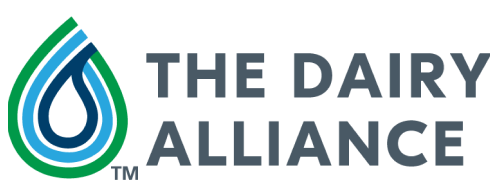What Is Lactose Intolerance?
Dairy foods are chock-full of vitamins, minerals, and other good-for-you nutrients. But along with all the positive features that dairy foods offer, for some people, the natural sugar found in some dairy foods can be problematic if they have lactose intolerance.
Depending on the variety, along with fats, proteins, water, and other components, many dairy foods contain a natural sugar called lactose. With the help of an enzyme our body produces called lactase, this sugar is broken down in the small intestine into simple sugars before it can be absorbed by the body and ultimately used as fuel.
What is Lactose Intolerance?
But for those with lactose intolerance, there is not enough of the lactase enzyme in someone's stomach produced to break down the lactose sugar. As a result, this carb remains in the gut and can cause a person to experience diarrhea, gas, and bloating.
While anybody can develop lactose intolerance, being born prematurely, experiencing an infection, having a diagnosis of celiac or Crohn’s disease, or being of Asian, African, Native American, and Hispanic backgrounds can increase your risk.
Lactose intolerance is not common in infancy. But as children get older, they can run the risk of experiencing a decrease in the production of the lactase enzyme, resulting in a lactose intolerance diagnosis. If you think your child may have lactose intolerance, seek guidance from your pediatrician.
Fortunately, if a person is lactose intolerant, there is no need to give up all dairy foods, as there are some varieties that are either lactose-free or extremely low in lactose, making them completely safe and appropriate for those with lactose intolerance.
Some dairy items that are typically well-tolerated by people with lactose intolerance include lactose-free milk, certain hard cheeses like cheddar and Parmesan, and certain yogurts that contain live and active cultures. It is important to remember that lactose-free milk provides the same 13 essential nutrients, including protein, calcium, and vitamin D, as regular milk.
Bottom line? If you have lactose intolerance, you can continue to include dairy foods in your diet, as long as you are focusing on choices that contain less lactose or are lactose-free. A cheddar grilled cheese sandwich or a glass of lactose-free milk can absolutely be a safe and healthy addition to a lactose-free lifestyle. Click here for lactose-free recipe inspiration.
Lauren Manaker, MS, RDN, LDN, CLEC, CPT is an award-winning registered dietitian, book author, and freelance writer. She has been working in the nutrition field for almost 20 years and is passionate about sharing evidence-based information with the public. She manages the Instagram account@LaurenLovesNutrition.






